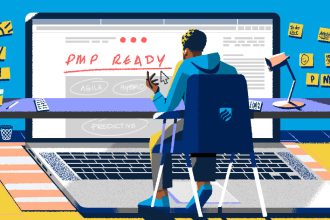Many students of today’s generation have always had instantaneous access to many forms of information and entertainment media. Therefore, they are accustomed to conversing through personal or mobile devices at all hours. Using a chatbot edtech on your site is an excellent way for universities to strengthen their relationships with present and potential students by facilitating easy and rapid access to information.
Chatbot edtech helps improve the student experience and helps educational institutions learn more about students’ challenges.
To get the most out of this technology, you need to learn about chatbots, their place in higher education, and the information they may collect.
What are chatbots?
Chatbots are artificially intelligent conversational robots that help users with issues on various websites, applications, and social media sites. They take in information, run calculations, and then provide solutions to the most frequently asked questions.
These chatbots are being used in a variety of scenarios. Chatbots have taken over nearly every industry by automating the transmission of information, from facilitating online shopping and simplifying online payment to responding to student inquiries and making suggestions for health services, taxis, etc.
How do chatbots work?
While most chatbots rely on machine learning, the range of features and responses available depends on the specific chatbot. Rule-based (or “basic”) and AI are the two most common categories.
Rule-based implementations analyze the current context to generate replies along predefined conversational pathways. You may have encountered this when a chatbot asks a question and gives you a few alternatives.
If a user asks a brand two questions, they will receive a slightly different answer each time. Since chatbots cannot grasp the subtleties of human discourse, they stick to predetermined lines. But there are various ways in which they may be tailored to the user’s needs and improved.
Artificial intelligence chatbots can do a wide variety of tasks. Their capacity to comprehend natural language is their main selling point. When NLP is combined with AI and ML, the chatbot may function as a human help desk employee. Artificially intelligent chatbots can be “taught” to recognize and respond appropriately to users’ emotions and intentions. Data collection and analysis are fundamental to its design.
Users will appreciate the constant availability of a customer support staff, whether that team is a basic bot or one powered by artificial intelligence.
Chatbots in higher education?
Chatbot edtech is on the rise and has helped contribute to the education sector. Chatbots have revolutionized admission, assessment administration, and instruction delivery. A growing number of chatbots are proving helpful for educational institutions, students, and their staff.
To keep pupils interested, they include a variety of media formats. Learning content is less text-heavy and more visually appealing, giving students a reprieve from that medium. They will learn more rapidly and become more interested in education. Chatbots also use automated responses to frequently asked questions which helps to streamline the administrative procedure.
How do chatbots benefit higher education?
- Chatbots offer individualized application processes for prospective students. By facilitating automated chats, they help the school reduce expenses.
- Student responses are compiled by the chatbots and sent to the next group. The group then uses this data, turning it into a dialogue.
- The questions asked by a chatbot can be screened for unnecessary details. Doing so lessens the number of fake leads that customers receive.
- Universities can use chatbot edtech for advertising and gathering contact information. They provide a service to potential students without the need for human interaction.
- They provide excitement and interest in the educational process.
- New entrants may find the registration procedure more manageable if chatbots can answer their questions and address any problems with online login areas.
- Chatbot edtech can guide student preferences through various channels with the help of chatbots.
- Better student engagement is achieved via chatbots because of the individualized information they deliver. The institution benefits from an increase in its standing and credibility.
- Chatbot edtech can help students with marketing and lead generation. They help those who want to go to college without needing any help from actual humans.
- Chatbots have positively impacted educators’ lives by making routine jobs easier through various optimization forms. The monotony of their work has been alleviated.
- Teachers can better devote their time and energy to giving children a quality education due to optimizing their daily routines.
- Regardings to questions about homework, course structure, and upcoming events, chatbots are the go-to solution.
In a nutshell, chatbot edtech will explode during the next few years. It will improve the dynamics of education and the relationships between teachers and students. The results will be a more rewarding educational experience for students.















